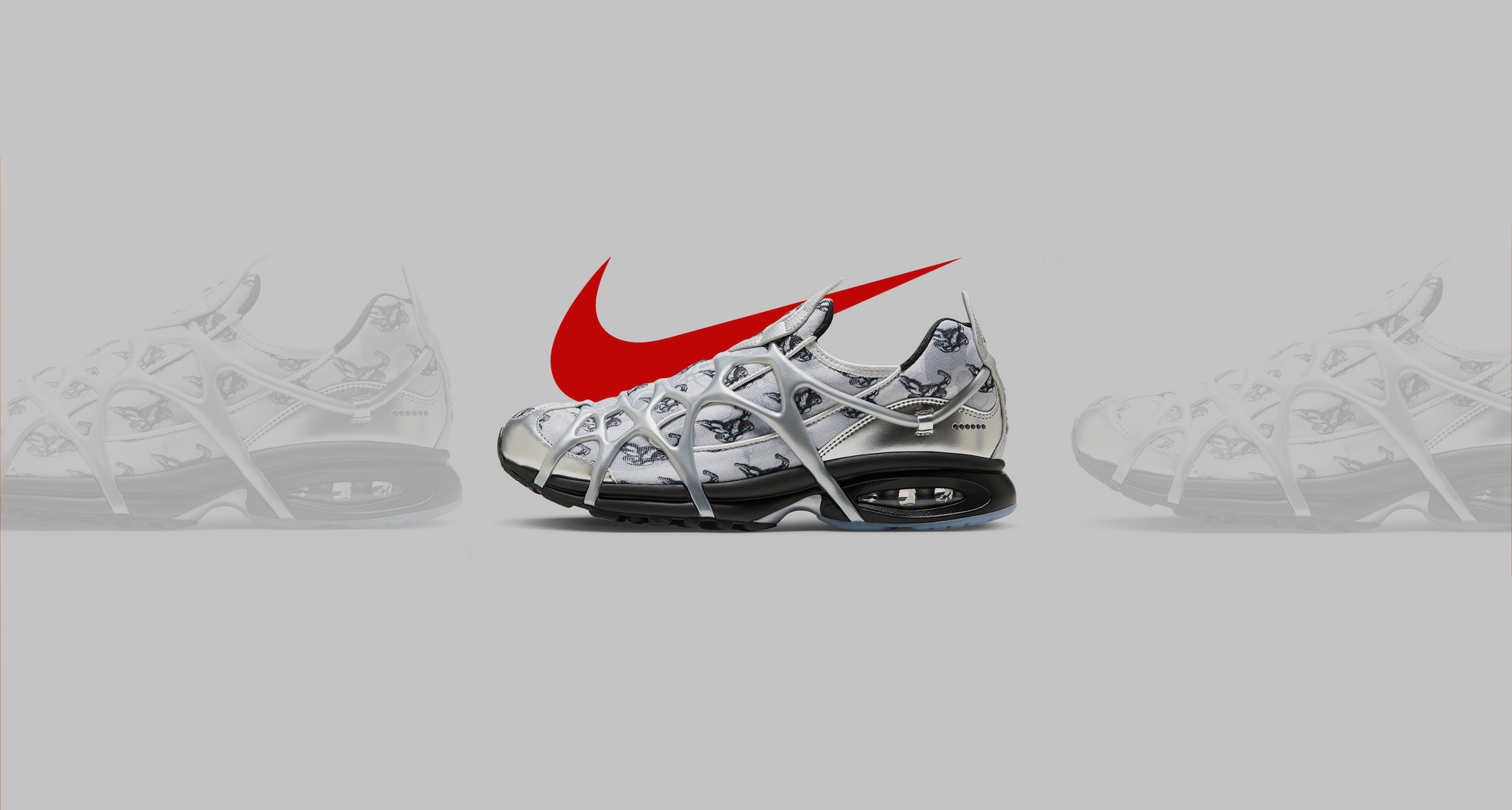
August 05, 2022 by Joey Birch
Nike Look Back At The '96 Swoosh Hero
In its history, Nike has had an extravagant range of marketing techniques, one of the most intriguing however is their 1996 superhero named ‘Swoosh’.
The idea for the Swoosh Hero came from track and field athlete, Ian Campbell who is arguably best known for losing his shot at a world record during a triple jump contest at the 1980 Moscow Olympics for supposedly continually overstepping the jump line resulting in the gold medal going to Russian athletes - a decision that many question.

Ian Campbell at the Moscow Olympics, 1980
At the time Swoosh was created, Campbell had become the Managing Director for Nike Sports Entertainment, a sporting venture that would see the sportswear brand set up sporting events with the idea of solely promoting Nike. These events included soccer games, golf tournaments featuring the likes of Tiger Woods as well as basketball games featuring Michael Jordan and Charles Barkley amongst others.
The opening event for the left field marketing strategy was a basketball game held in Japan in October of 1996. However, media outlets were seemingly sceptical of the plan. An article from the Sports Business Journal in 1997 reads: “Nike foresees presenting track meets, tennis matches, volleyball games and soccer matches as a means of promoting the Nike brand. Nike officials claim their goal is to "revolutionize" how soccer and other sports are presented”.
This scepticism is further hinted at when a journalist at the Portland Oregonian named Jeff Manning asks: “Specifically, will Nike invite athletes aligned with other shoe companies to compete in its events? Will [Nike's Ian] Campbell risk Donovan Bailey of Adidas winning the Nike 100 meter?” after the first basketball game from the year prior which only included Nike athletes.

While the entire marketing campaign drew a lot of attention and mixed opinion, it was the inclusion of a strange Silver Surfer-esc mascot that remains in many people's minds from the era: ‘Swoosh’.
Debuted during the ‘Hoop Heroes’ event in the Yokohama Centre in Tokyo, Nike’s Swoosh Hero was unleashed parading around the court showing off dance moves, and stunts on the rim, as well as trampoline-assisted dunks with accompanying firework flashes to increase the showmanship.

Designed by Jose Fernandez, the designer behind the 1995 Batman Forever Bat Suit, Swoosh (or Nike Man, Swoosh Hero, Swoosh Man amongst other names) featured a futuristic alien-like design with a predominantly silver finish as well as including a bold red Nike Swoosh on the chest as well as a further two mini Swooshes on either side of the helmet, similar to that of the original Air Max 97 ‘Silver Bullet’ which would be released in 1997 thanks to its designer, Christian Tresser.
Rumoured to cost around $125,000 per suit, of which Nike purchased two, the primary objective of the mascot was to accompany the exclusive sporting events. However, despite holding a myriad of competitions around the globe including track and field in Australia (a call back to the founder Campbell’s origins) as well as football games in Munich, the Sports Entertainment program failed to gain a huge amount of traction.

Tragically, in the Summer of 1997, a financial crisis hit Asia which provoked a severe drop in the number of sneakers being sold. Due to this, as well as the sheer cost of the sporting spectacles and the underwhelming attention Swoosh garnered, Nike Sports Entertainment was scrapped.
Due to its demise just a year after its debut, the NSE has since been widely forgotten about in popular culture and sneaker culture.
That is, until now.

Amongst some of Nike’s archival revival releases in 2022 such as the upcoming AMBUSH x Nike Air Adjust (a silhouette that came out in 1996) and the OG Air Max 97 ‘Silver Bullet’ as part of its 25th anniversary, the Swoosh have brought back another classic - the Air Kukini.
Originally arriving in 2000 as part of Nike’s ‘Alpha Project’ which included some of their most revolutionary models at the time, including the Air Presto, the Kukini utilises a primarily socklike upper, encased within a rubber cage that wraps around the forefoot. Designed by Sean McDowell, the mind behind the Air Max Plus (AKA TN), the model also has the iconic visible Air Unit in the heel.
Over the past few months, we have seen a range of colourways and designs both old and new returning including an eye-catching leopard print pair as well as a fan favourite OG ‘Water’ design set to release soon.
Despite the shoe releasing over 22 years ago, the aesthetic is still very much a futuristic one, and the same can be said for Swoosh’s suit from 1996. So, it only makes sense that the two come together.

The ‘Swoosh’ Nike Kukini comes as part of Nike’s latest ‘The Mighty Swooshes’ pack which also includes the Air Max 97, Air Force 1 and Air Jordan 1 Low each of which have been reimagined in a comic book style.
For the Kukini, an allover print of the iconic Nike hero can be seen across the silver upper with a small red Swoosh on the tongue tab as well as on the outsole.

However, it’s the insoles that continue the comic book theme with “Nike and the Mighty Swooshers” on the left and “The Battle of Dimension Six” on the right.
Whether this reference of Swoosh is hinting at a full return for the widely forgotten superhero is yet to be confirmed, but it is certainly an intriguing story from Nike’s past.
For the latest on Nike, keep it locked in with Kick Game.





